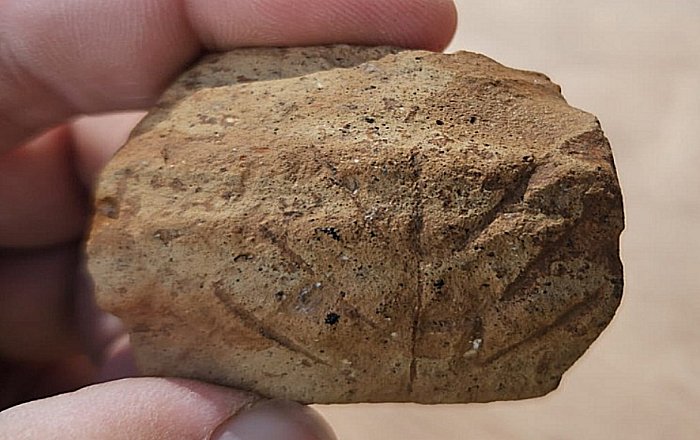Conny Waters – AncientPages.com – During excavations in Jerusalem’s heart, archaeologists recently unearthed an intriguing fragment of a Byzantine-era jar handle. They estimate the artifact is approximatly 1500 Years.

Image credit: Israel Antiquities Authority
“On the handle fragment, an engraving is discernible, composed of a line flanked by three diagonal lines on each side. This composition prompts speculation as to whether it represents a palm branch or a menorah with its characteristic seven branches,” states Benjamin Storchan, the excavation director at the Israel Antiquities Authority, and he further explains:
“The branches do not terminate at the same height, thus rendering it currently impossible to definitively ascertain the depicted symbol. These variations in height raise the question of its true nature.”
Storchan also suggests, “When encountering engravings etched onto handles, we usually attribute them to potters’ marks, which might apply here as well, signifying the potter responsible for crafting the jug.”
The Talmud attests that some rabbis employed symbols as personalized identification marks; for instance, Rabbi Chananiah utilized a palm branch as his signature. Other rabbis adopted ornament-like symbols such as fish or a ship’s masthead.
As we contemplate the likelihood of this fragment representing a menorah, a prominent Jewish emblem, skepticism is advised. Storchan, an archaeologist chooses a cautious and prudent approach and refrains from making definitive ᴀssertions.
“During the Byzantine era, the dominant population of the Jerusalem vicinity was Christian. Although Jewish and Samaritan communities in the region.”
What do you think – Does this fragment signify a seven-branched menorah or a palm branch? Share your thoughts!
Written by Conny Waters – AncientPages.com Staff Writer





